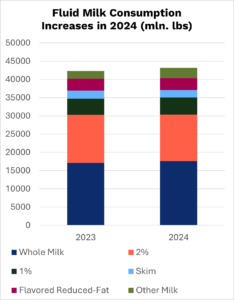Vermont dairy farmer Harold Howrigan, a member of the NMPF Board of Directors, urged the Senate Agriculture Committee to swiftly advance a five-year farm bill that renews the Dairy Margin Coverage program. He also addressed other major dairy issues, including the need for effective H5N1 vaccines for dairy cattle.
Howrigan, a sixth-generation farmer who also serves on the board of NMPF member cooperative Dairy Farmers of America, testified on NMPF’s behalf at a hearing held today.
Howrigan in his testimony focused on the dairy industry’s ongoing work with USDA and the Food and Drug Administration to safeguard dairy herds and farm employees from Highly Pathogenic Avian Influenza A H5N1, a.k.a bird flu. NMPF is pressing for swift advancement of effective H5N1 vaccines for dairy cattle as part of a risk-based vaccine deployment strategy that mitigates trading partner concerns.
“We appreciate USDA’s work to accelerate vaccine development and urge that a vaccine be made available as soon as possible,” Howrigan said.
Howrigan also touted the revamped dairy safety net authorized in the 2018 Farm Bill and strengthened by subsequent legislative and administrative actions. “The Dairy Margin Coverage program has served farmers well during difficult times. Since it was implemented six years ago, my farm has consistently purchased the maximum $9.50 coverage,” he said.
Howrigan also emphasized how important labor and trade issues are to dairy farmers and the cooperatives they own. He urged Congress to pass long-overdue immigration legislation that meets dairy’s unique labor needs and to work with the administration to seek new market access worldwide. “Failing to act risks damaging the vitality of our entire sector,” Howrigan said.
Finally, Howrigan urged the committee to pass the bipartisan Whole Milk for Healthy Kids Act, spearheaded by Sen. Roger Marshall, R-KS, and Sen. Peter Welch, D-VT. “Dairy is a nutrition powerhouse, but continues to be under consumed by most Americans,” he said.


 By Dr. Jamie Jonker, Chief Science Officer, National Milk Producers Federation
By Dr. Jamie Jonker, Chief Science Officer, National Milk Producers Federation By Paul Bleiberg, Executive Vice President, Government Relations, National Milk Producers Federation
By Paul Bleiberg, Executive Vice President, Government Relations, National Milk Producers Federation



